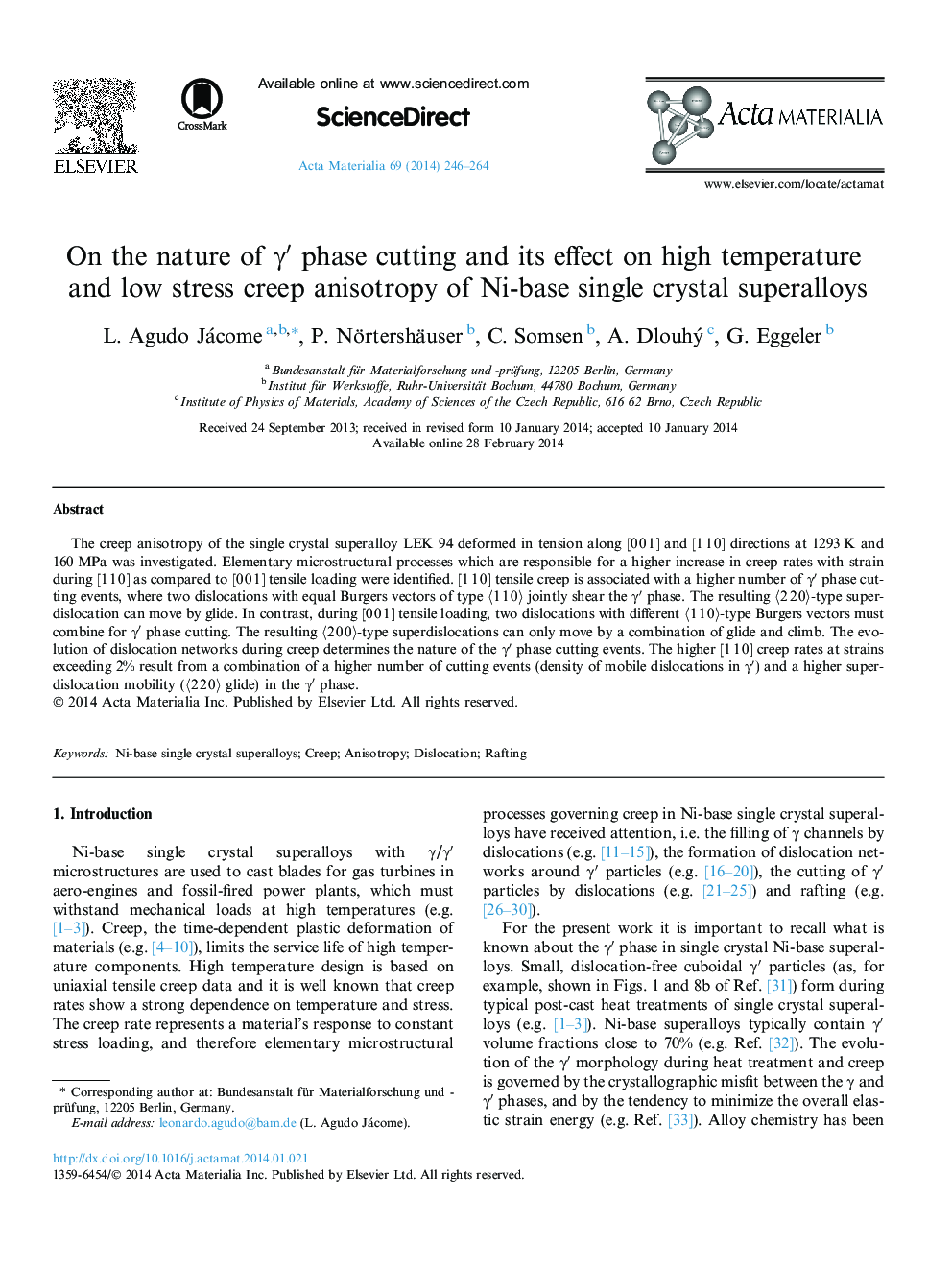| Article ID | Journal | Published Year | Pages | File Type |
|---|---|---|---|---|
| 7882303 | Acta Materialia | 2014 | 19 Pages |
Abstract
The creep anisotropy of the single crystal superalloy LEK 94 deformed in tension along [0 0 1] and [1 1 0] directions at 1293 K and 160 MPa was investigated. Elementary microstructural processes which are responsible for a higher increase in creep rates with strain during [1 1 0] as compared to [0 0 1] tensile loading were identified. [1 1 0] tensile creep is associated with a higher number of γⲠphase cutting events, where two dislocations with equal Burgers vectors of type ã1 1 0ã jointly shear the γⲠphase. The resulting ã2 2 0ã-type superdislocation can move by glide. In contrast, during [0 0 1] tensile loading, two dislocations with different ã1 1 0ã-type Burgers vectors must combine for γⲠphase cutting. The resulting ã2 0 0ã-type superdislocations can only move by a combination of glide and climb. The evolution of dislocation networks during creep determines the nature of the γⲠphase cutting events. The higher [1 1 0] creep rates at strains exceeding 2% result from a combination of a higher number of cutting events (density of mobile dislocations in γâ²) and a higher superdislocation mobility (ã2 2 0ã glide) in the γⲠphase.
Keywords
Related Topics
Physical Sciences and Engineering
Materials Science
Ceramics and Composites
Authors
L. Agudo Jácome, P. Nörtershäuser, C. Somsen, A. Dlouhý, G. Eggeler,
